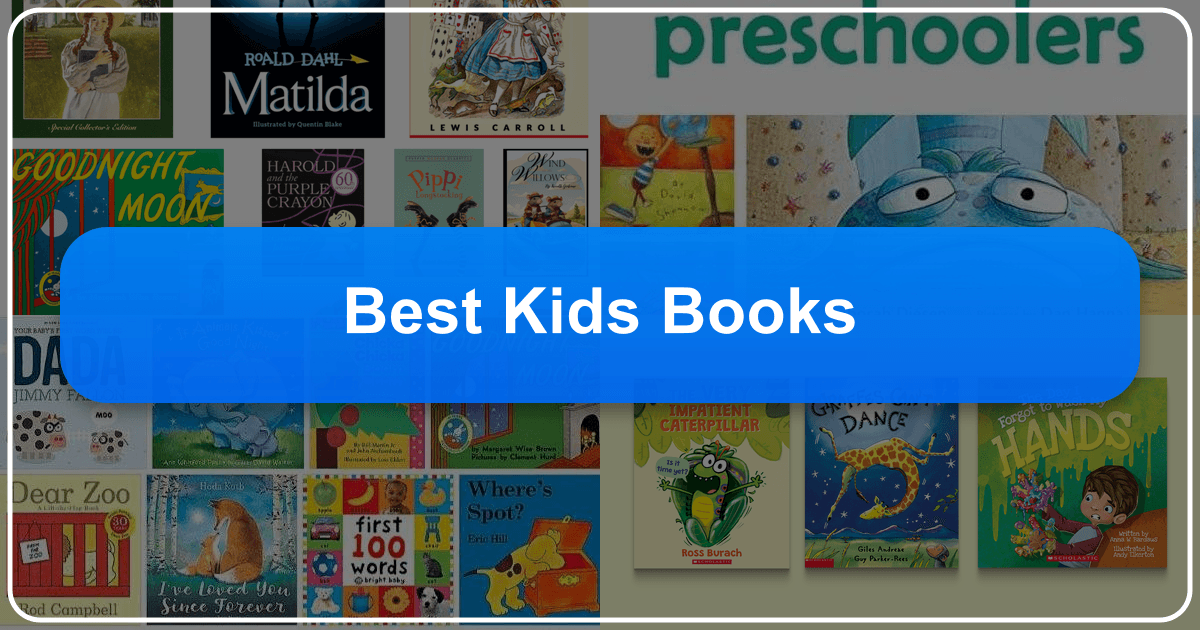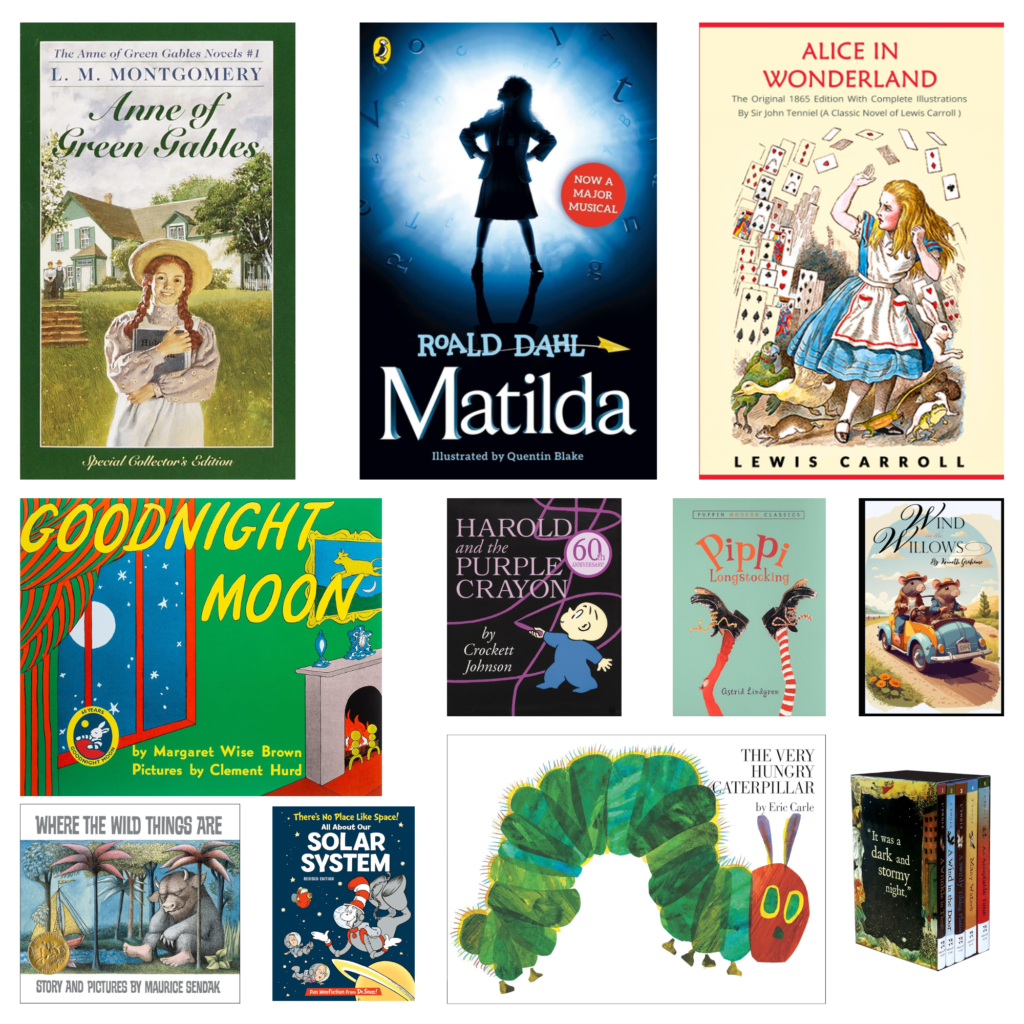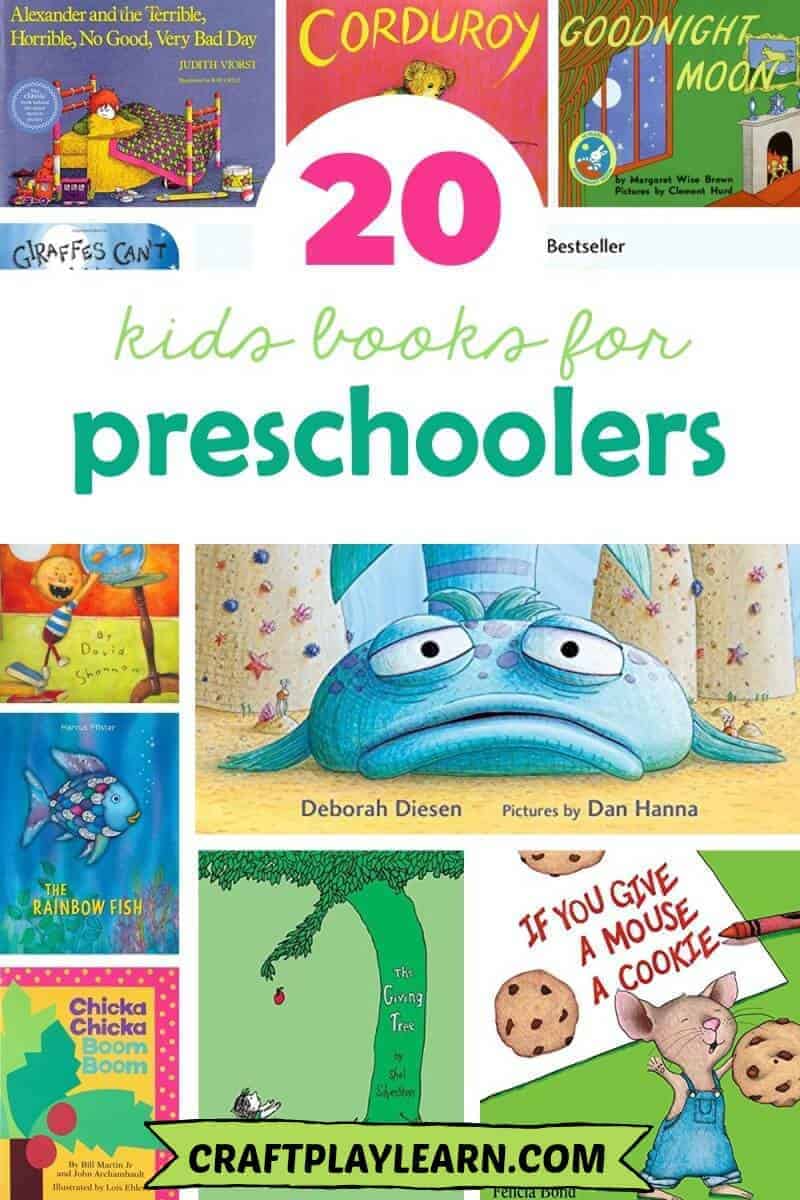Best Kids Books: A Comprehensive Guide for Parents and Educators

Choosing the right books for children can be a daunting task, given the sheer volume of titles available. This guide aims to alleviate that challenge by providing a comprehensive overview of the best kids’ books, categorized by genre, age group, and educational value, drawing inspiration from various reputable sources and focusing on the long-term impact of quality children’s literature. We’ll explore a wide range of books, from classic tales to modern masterpieces, highlighting their literary merit, educational impact, and cultural significance. Our goal is to equip parents, educators, and librarians with the knowledge to curate a stimulating and enriching reading experience for young minds.

Exploring Genres and Age Appropriateness
The world of children’s literature encompasses a diverse range of genres, each catering to different age groups and developmental stages. Picture books, with their vibrant illustrations and simple narratives, are ideal for toddlers and preschoolers, fostering a love for reading and language development. Early chapter books, featuring longer narratives and slightly more complex vocabulary, bridge the gap between picture books and novels, preparing young readers for more challenging texts. Middle-grade novels delve into more complex themes and character development, appealing to readers aged 8-12. Finally, young adult (YA) literature caters to teenagers, tackling mature themes and exploring complex relationships and societal issues.

Within each genre, the selection of appropriate books should consider the child’s reading level, interests, and developmental needs. For younger children, books with repetitive phrases, rhyming patterns, and interactive elements can enhance engagement and comprehension. As children mature, they can progress to books with more complex plots, richer vocabulary, and nuanced character portrayals.
Picture Books: Igniting Imagination and Language Skills
Picture books are more than just stories; they are windows to the world, sparking imagination, stimulating language development, and fostering emotional intelligence. High-quality picture books often feature:
- Engaging storylines: Simple yet compelling narratives that capture children’s attention and encourage active listening.
- Vibrant illustrations: Eye-catching visuals that enhance the storytelling experience and create a lasting impression.
- Repetitive phrases and rhyming patterns: Familiar language structures that support vocabulary acquisition and reading fluency.
- Interactive elements: Flaps, lift-the-flaps, and other tactile features that increase engagement and participation.
- Themes that resonate: Stories that explore universal themes of love, friendship, loss, and resilience, providing opportunities for emotional development.
Examples of beloved picture books include “Where the Wild Things Are” by Maurice Sendak, “The Very Hungry Caterpillar” by Eric Carle, and “Goodnight Moon” by Margaret Wise Brown. These classics continue to captivate generations of children with their timeless narratives and beautiful illustrations.
Chapter Books: Building Reading Fluency and Comprehension
Chapter books provide a stepping stone towards more complex narratives, fostering reading fluency, comprehension, and critical thinking skills. Effective chapter books often incorporate:
- Gradual increase in vocabulary and sentence structure: Challenging yet accessible language that expands children’s vocabulary and enhances their understanding of sentence construction.
- Engaging plots and characters: Compelling storylines and relatable characters that keep readers invested in the narrative.
- Age-appropriate themes: Stories that explore increasingly sophisticated themes, offering opportunities for deeper understanding of human emotions and experiences.
- Illustrations that enhance the text: Visual elements that complement the narrative, providing context and visual interest.
Series books, such as the “Magic Tree House” series, can be especially effective in motivating reluctant readers, fostering a sense of accomplishment and building confidence.
Middle-Grade and Young Adult Novels: Exploring Complex Themes and Issues
Middle-grade and YA novels provide opportunities for readers to engage with complex themes, diverse perspectives, and challenging societal issues. These books often:
- Explore mature themes: Stories that address social justice, identity, relationships, and other relevant issues facing young people.
- Develop nuanced characters: Complex characters with multiple layers and motivations, leading to a deeper understanding of human behavior.
- Present diverse perspectives: Stories that represent a wide range of cultural backgrounds and experiences, fostering empathy and understanding.
- Challenge preconceived notions: Books that encourage critical thinking and question societal norms, prompting reflection and discussion.
Examples include “The Hate U Give” by Angie Thomas, which tackles racial injustice and police brutality, and “The Giver” by Lois Lowry, which explores dystopian themes and the importance of memory and individual freedom.
The Role of Authors and Their Literary Influence
Children’s authors play a pivotal role in shaping young readers’ understanding of the world and their place within it. Their writing style, inspirations, and the themes they explore significantly influence a child’s development. Some authors focus on creating whimsical and fantastical worlds, while others ground their stories in realistic settings, exploring social issues and human experiences. The author’s background and personal experiences often inform their writing, enriching the narratives with authenticity and depth.

Understanding an author’s writing style – whether it’s lyrical prose, humorous dialogue, or suspenseful storytelling – can enhance appreciation for the literary artistry involved in crafting children’s books. Examining the author’s inspirations, such as personal experiences, historical events, or other works of literature, provides context and deeper insight into their work. Studying their famous works and their impact on the literary landscape can reveal enduring themes and ideas that have resonated with readers across generations.
Reading Habits, Educational Value, and Life Lessons
Encouraging a love for reading from an early age is crucial for a child’s overall development. Establishing consistent reading habits, even for just 15-20 minutes a day, can significantly impact vocabulary acquisition, comprehension skills, and critical thinking abilities. Reading aloud to children, regardless of their age, not only fosters a love for storytelling but also helps them develop listening skills and improve language comprehension. Interactive reading activities, such as asking questions, discussing characters and plots, and engaging in creative writing exercises, can further enhance the learning experience.
Children’s books often impart valuable life lessons, teaching children about empathy, resilience, problem-solving, and social responsibility. Exploring themes of friendship, family, courage, and overcoming challenges helps children navigate their own lives and develop essential life skills. The educational value of children’s literature extends beyond mere entertainment; it is a powerful tool for cognitive, emotional, and social development.
The Importance of Libraries and Digital Resources
Libraries are essential community hubs providing access to a vast array of books and resources for children. Public libraries offer a welcoming space for children to explore different genres, engage in reading programs, and participate in storytelling events. Digital libraries expand access to a wider range of titles, especially those less commonly found in physical libraries. Rare book collections and archives preserve literary heritage, offering insights into the history of children’s literature and its evolution.
These resources are invaluable for cultivating a love for reading and providing diverse learning opportunities. The digital landscape further expands access through e-books, audiobooks, and interactive reading platforms.
Cultural Impact and the Enduring Power of Children’s Literature
Children’s literature has a profound cultural impact, shaping societal values, influencing attitudes, and reflecting changing social norms. Award-winning books often highlight important social issues, fostering dialogue and challenging preconceived notions. Literary adaptations, such as film and theatrical productions, further amplify the reach and impact of children’s stories. The formation of reading communities and book clubs provides opportunities for shared experiences and discussions, fostering a love for reading and promoting literacy among children.
This comprehensive guide has merely scratched the surface of the vast and enriching world of children’s literature. By exploring different genres, considering the author’s influence, promoting positive reading habits, leveraging library resources, and recognizing the cultural impact of these books, we can empower young readers to develop a lifelong love for reading and learning. Remember, the “best” kids’ books are those that resonate with the individual child, sparking their imagination, fostering their growth, and leaving a lasting impact.